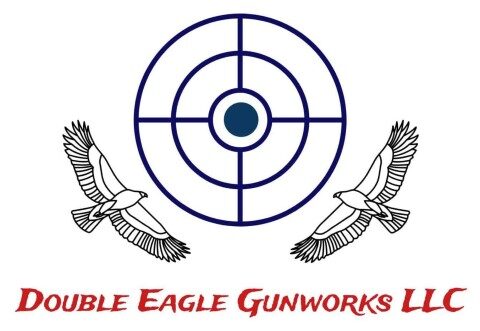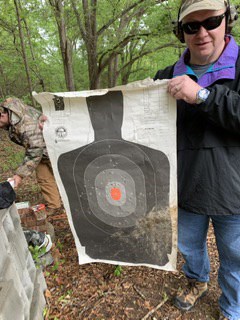You are thinking of carrying a concealed weapon and you know you need some instruction. Your state may require specific topics to be covered in class, or you may live in a state where no instruction is required.
The topics covered in a Concealed Weapons Permit (CWP) class are determined by the laws of that state. In South Carolina the course includes:
- Basic Firearm Safety
- Home Safety/Safe Firearm Storage
- Firearm Terminology
- Firearm Operation
- Basics of Firearm Marksmanship
- Basics of Concealed Carry
- SC Statutory and Case Law
- Using a Firearm in Self Defense
- Where and Where Not to Carry
- Written Test
- Rules of The Range
- Firearm Qualification Course
- Properly Securing a Firearm in a Holster
- “Cocked and Locked” Carrying of a Firearm
- How to Respond to a Person Who Attempts to Take Your Firearm From Your Holster
- De-Escalation Strategies and Techniques
Why you need a Concealed Weapons Course
Carrying a concealed weapon is one of the biggest responsibilities you can take on, right up there with driving a car and raising a child. Some states, such as South Carolina, require a course that covers specific information.
Even in a state without a law requiring a permit, you may want to get one because of reciprocity laws. When you travel you will want to take your gun with you, and this depends on the laws of the states you will visit. South Carolina, for instance, honors the permits of 25 states (the link goes to sled.sc.gov).
If you live in a Constitutional Carry state such as Arkansas, you may carry in South Carolina with your Arkansas permit, but not based on the fact that you could carry at home without a permit.
You must follow the laws of the state you are visiting. North Carolina, for instance, permits open carry, but that does not entitle North Carolina residents to carry openly in states that require concealment.
Your state’s permit will be honored in some, but not all, other states. USCCA.com offers details on which states offer reciprocity for each others’ permits.
You also need the information offered in a concealed carry course for your own peace of mind. You need to understand the laws in your state and the basics of gun safety before you strap on a holster, because you need to get it right every time.
What You Need to Know Before You Take a Concealed Carry Course
At Double Eagle Gunworks LLC we recommend you do not start your education with the CWP class. At the end of the day you will be shooting 25 to 50 rounds, with the expectation that 70% of them will land in the specified area of the target. If you have never shot a gun before, this may be too much to achieve on your very first day.
You can have a friend take you to a gun range and show you how to use a gun.
You can also take private lessons. We offer individualized lessons and can show you everything from how to hold a gun to which gun you might like to buy. We also offer small group classes on topics such as Basic Shooting and Shooting for Women.
Make sure you have thought through the implications of gun ownership before you take the CWP class so that you will be able to absorb the how-to information presented with the assumption that you are ready to carry.
How to Find a Concealed Carry Course
You can do an internet search with the term “concealed weapons course” and the name of your location.
You can also go to the website of your state’s licensing agency. In South Carolina that is sled.sc.gov. When you click the link you can choose your county or type in a city.
The Length of a Concealed Carry Course
There is no specific requirement for the length of the course, but expect to clear a day for it.
After learning the laws and familiarizing yourself with the operation of the gun, you will shoot up to 50 shots at varying distances under the supervision of your instructor. To qualify you will need to hit the specified area of the target with 70% of your shots. You will need to answer 70 percent of the written questions correctly on the test.
What to Bring to a Concealed Weapons Course
You will need your identification, which can be a driver’s license or a state-issued picture identification. You may obtain your fingerprints ahead of time at the Sheriff’s Office.
If you want to use the faster electronic method of fingerprinting, we can help you go online at the course and make an appointment at the Identogo fingerprinting location closest to you.
If you already own a handgun, bring it along with 50 rounds of ammunition. We have semi-automatics and revolvers available for rental at the class, and we can sell you the ammunition you need to qualify.
Check with your instructor before the class to make sure this option is available if you need it. Ammunition is currently hard to find, so start looking now.
Bring your gun in a locked case to comply with the law. You can carry concealed after you receive your permit in the mail.
Bring eye protection in the form of safety glasses. You will need to wear them on the range even when you are not shooting because ejected cases may fly in your direction.
Bring ear protection in the form of ear plugs or noise cancelling earmuffs. These range from very inexpensive disposable plugs to over a hundred dollars for electronic earmuffs that magnify sounds between shots so that you can have a conversation at the range.
You have to wear ear protection any time you visit a range because even the quietest gun can cause hearing loss if you shoot unprotected. Go ahead and purchase ear protection because you will want to visit the range often to keep up your shooting skills.
Your instructor may provide reading materials or require you to purchase a book.
How to Dress For a Concealed Carry Course
Dress comfortably with room to move. Wear a high enough neckline to avoid cases bouncing into the front of your shirt. Wear closed-toed shoes. Bring a hat if the shooting range is outdoors. The classroom time will be indoors so bring a sweater if air conditioning makes you cold.
What Your Instructor Needs to Know About You
Be prepared to share your name, address, phone number, and a valid state identification number. Instructors usually keep this information for their records in case you need verification of your course later.
You’ll likely learn most of the following:
- Basic Firearm Safety
- Home Safety/Firearm Storage
- Firearm Terminology
- Firearm Operation
- Basics of Marksmanship
- Basics of Concealed Carry
- Statutory and Case Law (Usually state specific)
- Using a Firearm in Self Defense
- Where and Where Not to Carry a Firearm
- How to Properly Secure a Firearm in a Holster
- De-Escalation Strategies and Techniques
Written Test
After the course work, you will be given a written test. The majority is true and false, with a few multiple choice. You need a score of 70% to pass. Everything you need to know is covered in the course.
Rules of the Range
Your instructor will likely go over the range rules to keep you and your classmates safe.
Firearm Qualification Course
At some point during your class you will go on a range. You will shoot at specified ranges beginning at three yards and going all the way back to fifteen yards.
The class you attend may shoot in large or small groups, always with range safety officers watching to maintain safety for everyone.
In South Carolina you are required to shoot twenty-five to fifty rounds, with at least 70% on the target.
What Happens After the Course
In addition to the money you pay your instructor for the course, you have to pay a fee to Identogo for a background check. Your instructor will help you fill out a checklist to send to the State Law Enforcement Division (SLED).
If you did the electronic fingerprints available in selected locations (the closest to Spartanburg is in Greenville), you may receive your permit in less than a month, but paper-based fingerprints may cause the process to take about three months.
The popularity of concealed carry courses is high right now because political unrest always inspires a surge of interest in gun ownership. Allow extra time for the state agency to process more applications.
Your permit will arrive in the mail. It is good for five years, at which time you need to renew it like a driver’s license. You don’t need to take a new course each time unless you allow your permit to lapse past the grace period.
You may renew electronically. If you miss your expiration date for eighteen months you will be required to renew on paper.
Keep your skills up by practicing regularly at a shooting range. Once a month is a helpful guideline and doable for most people. Keep reading and learning about concealed carry.
Stay informed about the laws in your state. They can change as often as the legislature meets.
Consider Liability Insurance
We suggest purchasing liability insurance. As a CWP holder you may be called upon to use your gun in self defense, and you want quick access to a lawyer who specializes in self defense.
If you have never shot a gun, we suggest taking an introductory class first.


